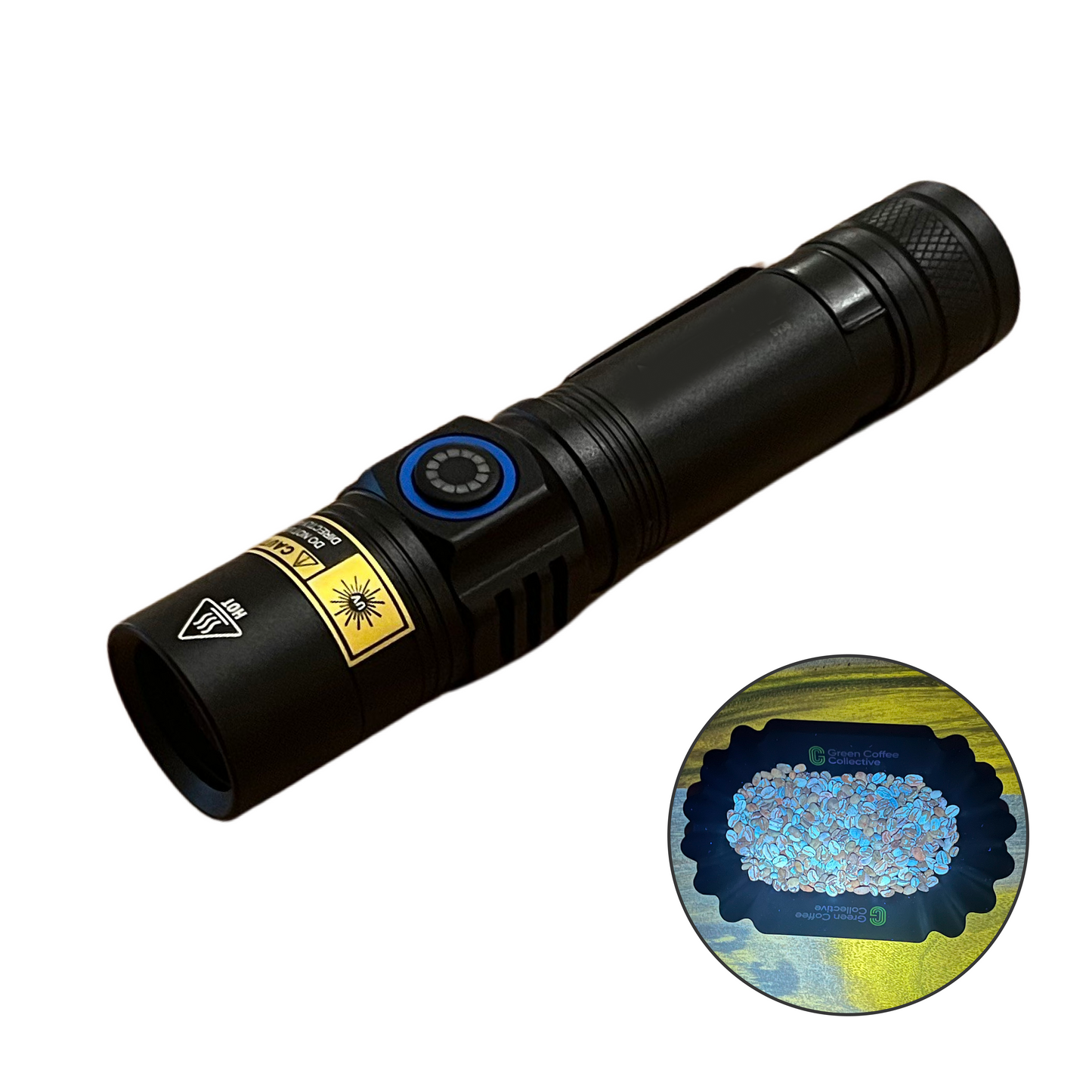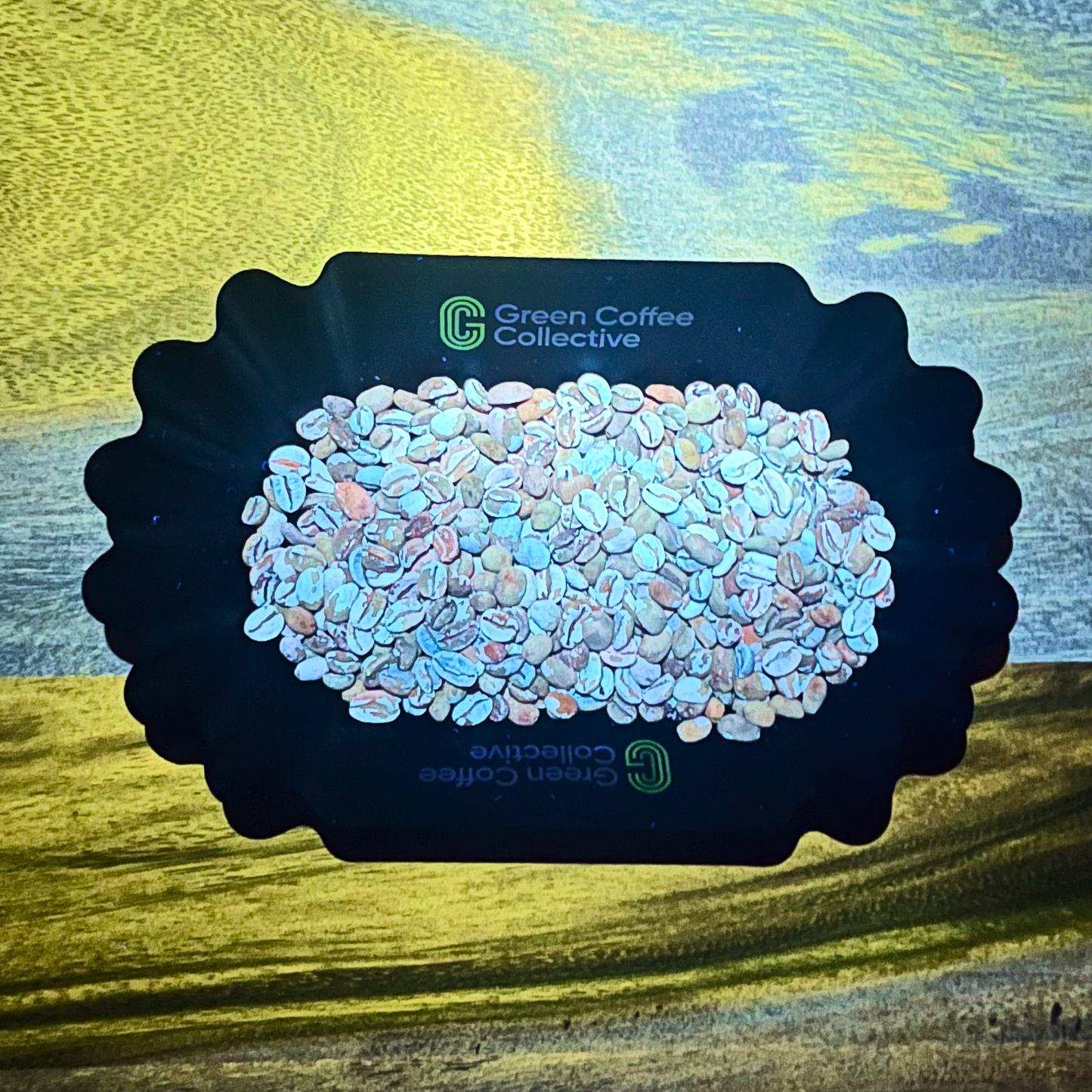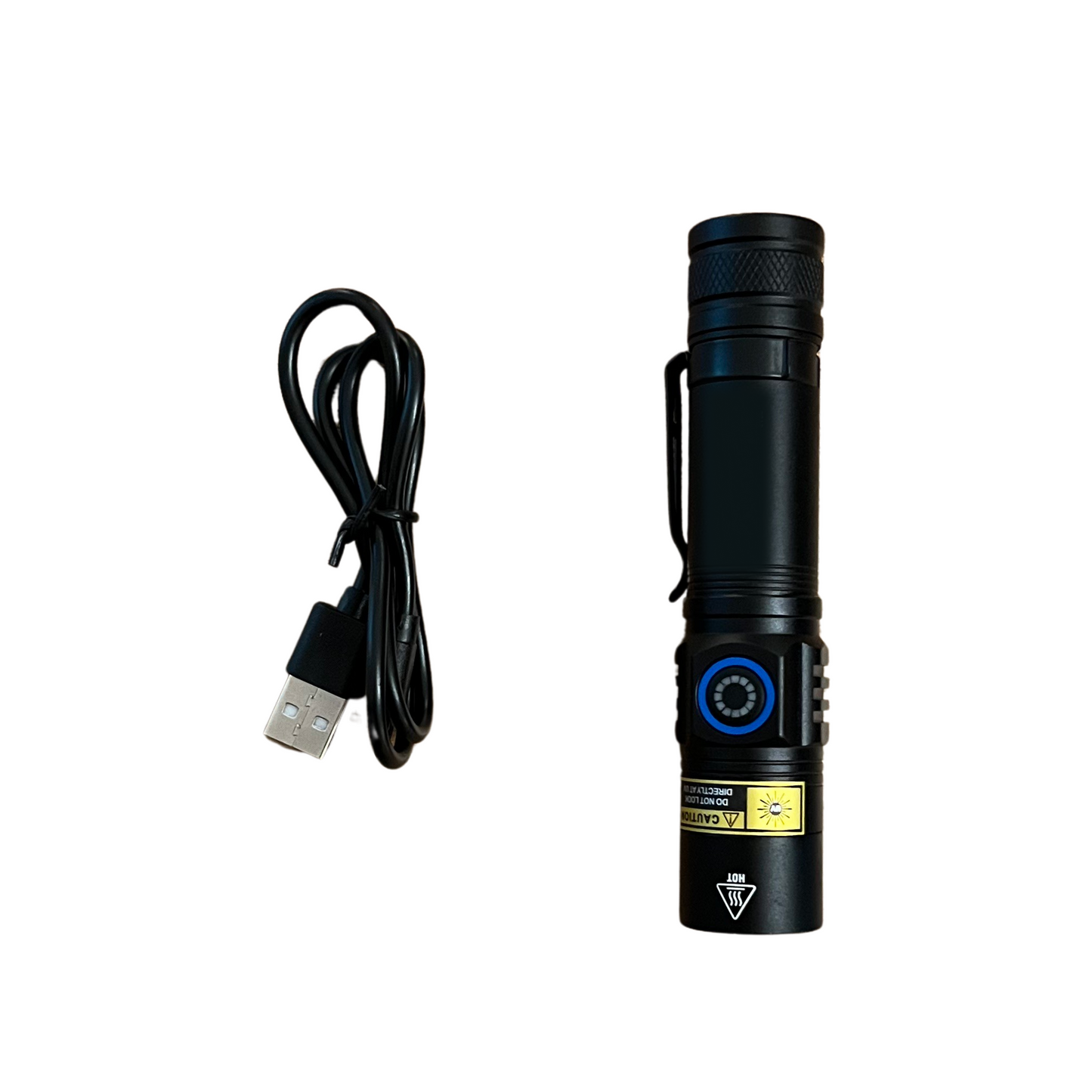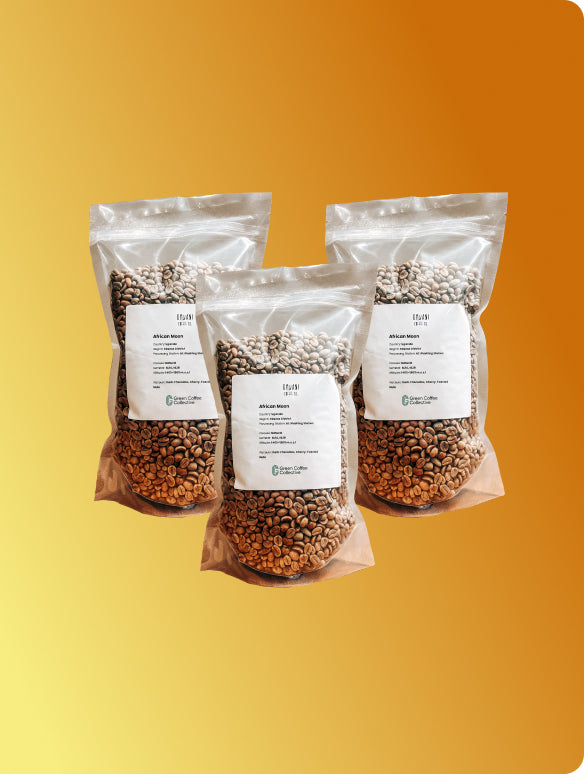


365nm UV Black Light Torch for Coffee Analysis – Rechargeable & Portable
Reveal hidden defects, quakers and cleanliness issues in seconds
Couldn't load pickup availability
Key Details:
Bring lab-level insight to your cupping table. This 365 nm UV torch turns a two-minute scan into clearer buying and roasting decisions – all for less than the cost of a single sample roast gone wrong.
What you’ll spot
Glowing “full fluorescents” – often lower-density, lower-moisture beans that fade and stale faster. Feran’s data shows they’re about 10 % less dense and lose cup quality sooner, so roasting them first (or removing them) keeps flavour on point.
Speckled or partial fluorescents – hints of poor drying or hot fermentation.
Surface residue on roasted coffee, grinders and worktops – hygiene at a glance.
This UV torch isn’t designed to tell you if a coffee is good or bad. Fluorescence under black light highlights physical traits – like density or drying inconsistencies – that may affect how quickly a coffee loses quality, not necessarily its immediate cup score. It’s a useful tool for identifying potential shelf-life concerns or early roasting priorities, but it should always be used alongside cupping, moisture analysis, and your usual quality control practices.
0% Finance Available
We offer a selection of finance options through our payment partners
Pay in your preferred currency
We support +30 currencies
Buy now, pay later
Relaxed payment terms to suit you
The Science Behind UV and Coffee Fluorescence
The Science Behind UV and Coffee Fluorescence
Built for Roastery Work – How This Torch is Manufactured
Built for Roastery Work – How This Torch is Manufactured
What We’ve Seen in the Field
What We’ve Seen in the Field
Our Guarantees
Not happy, just let us know and we'll arrange a collection and a full refund
Any issues with any equipment and we'll organise a repair or replacement
We guarantee the best price of we'll match your quote
Couldn't load pickup availability
0% Finance Available
We offer a selection of finance options through our payment partners
Pay in your preferred currency
We support +30 currencies
Buy now, pay later
Relaxed payment terms to suit you
 m
m
 m
m
 m
m

Here’s what our
customers are saying...
customers are saying...
-
John Pilkington
-
Gustavo Marchesini
-
David Dunlop

